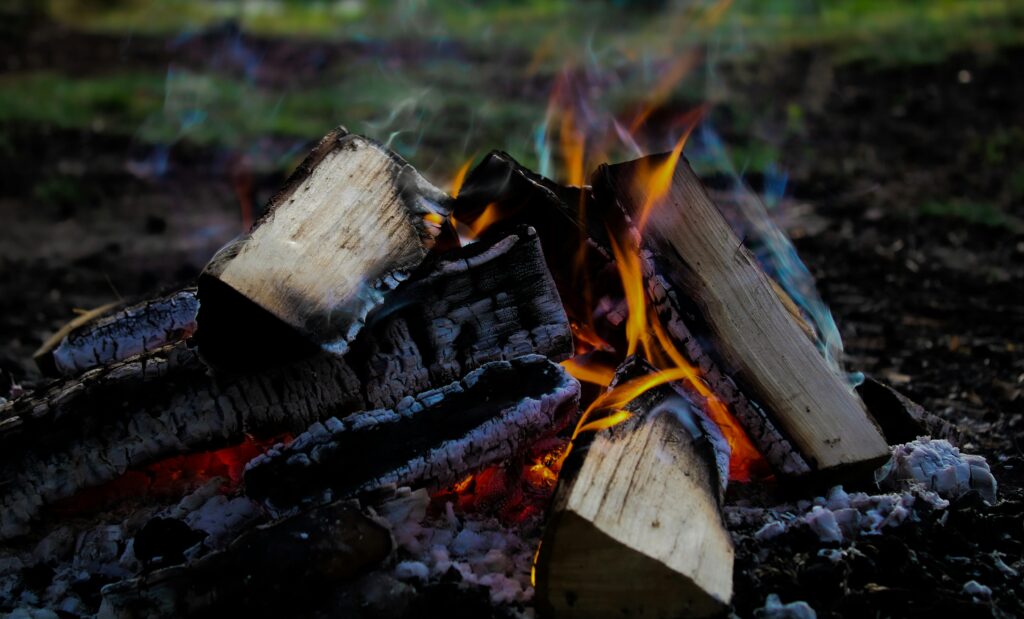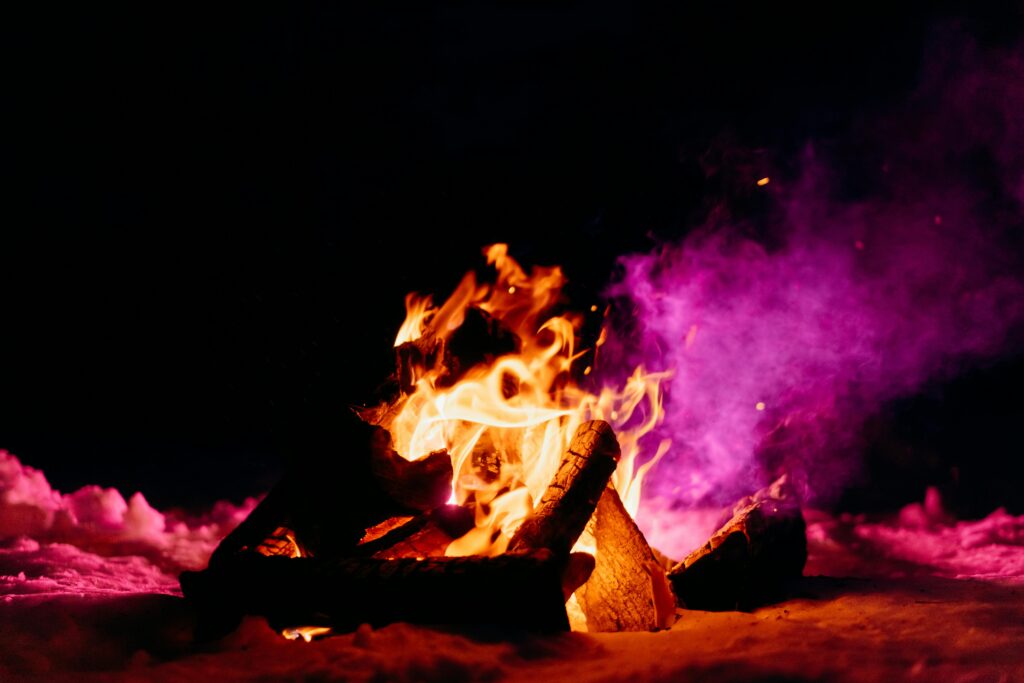Wildfires are a growing concern, with their smoke casting a far-reaching shadow over air quality and health. The question “how far can forest fire smoke travel” is critical for travelers, residents, and communities planning for safety in 2025. Forest fire smoke can journey vast distances, affecting areas far from the flames.
This article explores the extent of smoke travel, incorporating supported keywords like wildfire smoke health risks, forest fire air quality, wildfire smoke travel distance, and wildfire smoke precautions to provide an SEO-friendly, informative guide.
How Far Can Forest Fire Smoke Travel?
Forest fire smoke can travel hundreds to thousands of miles, depending on environmental factors. According to a 2023 Columbia Climate School report, smoke from Canadian wildfires reached New York City, over 2,000 miles away, creating an orange haze and triggering air quality alerts.
In extreme cases, smoke can even cross continents—California wildfire smoke has been detected over Europe, as noted in a 2023 Climate Central study. The wildfire smoke travel distance is influenced by wind patterns, atmospheric conditions, and fire intensity, making it a dynamic and far-reaching phenomenon.
Factors Influencing Wildfire Smoke Travel Distance
Several key factors determine how far smoke travels, shaping its impact on forest fire air quality:
- Wind Patterns: Strong winds can carry smoke particles thousands of miles. For instance, during the 2023 Canadian wildfires, a low-pressure system pushed smoke down the U.S. East Coast, as reported by Columbia Climate School.
- Atmospheric Height: Smoke can rise up to 5 miles into the troposphere or even the stratosphere, allowing it to travel farther before descending. A 2024 Smart Air study noted smoke reaching 20,000 feet, traveling 2,000 kilometers in under 15 hours.
- Fire Intensity: Larger, more powerful fires, like Australia’s 2019–2020 Black Summer, produce more smoke, which can travel globally when lifted into the stratosphere.
- Weather Conditions: Rainfall can clear smoke, while stable atmospheres trap it, affecting dispersal. A 2025 EPA report highlights how atmospheric stability influences smoke lingering for weeks.
These wildfire smoke travel distance factors explain why smoke can impact regions far from the fire’s origin.
Wildfire Smoke Health Risks

The wildfire smoke health risks are significant, especially as smoke travels long distances. Fine particulate matter (PM2.5) in smoke can penetrate deep into the lungs and bloodstream, causing respiratory issues, cardiovascular problems, and eye irritation.
A 2025 Guardian study found that short-term exposure to wildfire PM2.5 is 93% more deadly than previously estimated, with 535 annual deaths in Europe alone. Vulnerable groups—children, the elderly, and those with asthma—face higher risks. Monitoring forest fire air quality through tools like AirNow’s Fire and Smoke Map is essential for staying safe.
Wildfire Smoke Precautions for Travelers and Residents
To protect yourself from smoke, especially when traveling in fire-prone areas, follow these wildfire smoke precautions:
- Check Air Quality: Use apps like AirNow or PurpleAir to monitor PM2.5 levels in real-time, especially in regions affected by fires.
- Stay Indoors: Keep windows and doors closed during poor air quality events, and use air purifiers with HEPA filters to reduce indoor pollution.
- Wear Masks: N95 or KN95 masks can filter out most PM2.5 particles when outdoors, as advised by experts in a 2023 TIME article.
- Limit Outdoor Activity: Avoid strenuous exercise like jogging during high-smoke periods, as it increases inhalation of harmful particles.
- Stay Hydrated: Drink plenty of water to help your body cope with smoke exposure, a tip from the CDC’s 2025 wildfire guidelines.
These precautions are vital for minimizing wildfire smoke health risks, whether you’re near a fire or thousands of miles away.
Impact on Travel Plans in 2025

For travelers, understanding how far can forest fire smoke travel is crucial for planning safe trips. In 2025, wildfire seasons are extended due to climate change, with posts on X noting increased fire activity in the U.S. West and Canada. Smoke from these fires can affect popular destinations like California or Colorado, even if the flames are far away.
For example, smoke from the 2018 Camp Fire traveled hundreds of miles, impacting San Francisco’s air quality for weeks, per a 2025 EPA report. Check forest fire air quality forecasts via AirNow before booking trips to fire-prone regions.
Environmental and Climate Connections
Climate change amplifies the reach of wildfire smoke by creating drier conditions and longer fire seasons. A 2023 NASA study reported a 20% increase in wildfire seasons globally, pushing smoke farther as fires burn hotter and longer.
Reforestation and sustainable land management are critical to reducing fire intensity and smoke spread, supporting forest fire air quality improvements. Communities can also adopt wildfire smoke precautions like creating clean air shelters to mitigate impacts.
Overcoming Smoke-Related Travel Challenges
Traveling during wildfire season presents challenges, but preparation helps:
- Air Quality Disruptions: Use real-time air quality apps to adjust plans if smoke levels spike.
- Health Concerns: Carry a portable air purifier or N95 masks for outdoor activities in smoky areas.
- Itinerary Flexibility: Plan indoor activities, like visiting museums, if outdoor exploration is unsafe due to smoke.
Why Understanding Smoke Travel Matters
Knowing how far can forest fire smoke travel empowers you to make informed decisions. Smoke’s ability to travel thousands of miles means even distant communities can face poor air quality, as seen when Canadian wildfire smoke blanketed the U.S. East Coast in 2023.
By staying proactive with wildfire smoke precautions and monitoring forest fire air quality, you can protect your health and enjoy safe travels. This knowledge also informs advocacy for climate action to reduce wildfire frequency and impact.
Conclusion
So, how far can forest fire smoke travel? It can span hundreds to thousands of miles, carried by winds and atmospheric conditions, impacting air quality far from the fire’s source. By understanding wildfire smoke travel distance, addressing wildfire smoke health risks, and following wildfire smoke precautions, you can stay safe whether at home or traveling.
Use tools like AirNow to monitor forest fire air quality, plan flexibly, and embrace proactive measures to enjoy 2025’s adventures worry-free. Stay informed, breathe easy, and navigate the challenges of wildfire smoke with confidence.
FAQs About Forest Fire Smoke and Speed
How far away can you see smoke from a fire?
Smoke from a forest fire can be visible from 10–100 miles away, depending on fire size, wind, and terrain, with large fires like the 2023 Canadian wildfires visible from hundreds of miles.
How far up does smoke go?
Wildfire smoke can rise 1–5 miles into the troposphere or even reach the stratosphere (10–30 miles), allowing it to travel long distances, as noted in a 2024 Smart Air study.
Does the smell of fire smoke go away?
The smell of wildfire smoke can linger for days to weeks, depending on ventilation and weather; rain or wind can clear it faster, while indoor odors may require air purifiers.
How fast can bushfires travel?
Bushfires can travel 6–14 miles per hour on average, but under extreme conditions with strong winds, they can reach speeds up to 20–25 mph, as seen in Australia’s 2019–2020 fires.
